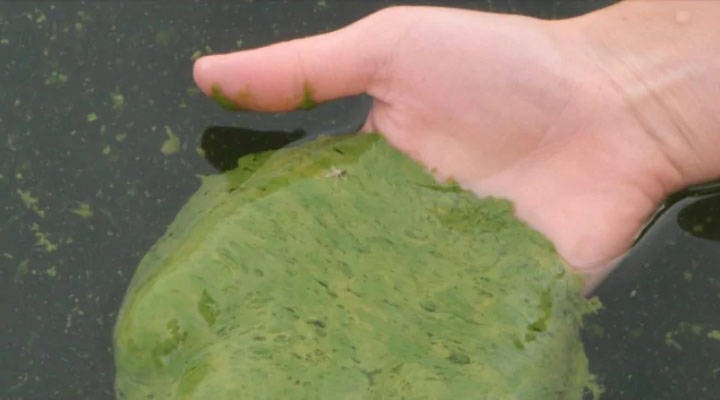Tuesday July 28, 2020, Alberta Health Services (AHS) issued an advisory for a blue-green algae (cyanobacteria) bloom on Pigeon Lake.
The bloom has only been identified in areas of Pigeon Lake, therefore areas of the lake where the blue-green algae bloom is not visible can still be used for recreational purposes; even while the advisory is in place.
However, it is important to be aware that weather and wind conditions can cause algae blooms to move from one location in the lake to another.
According to AHS, blue-green algae is naturally occurring and often becomes visible when weather conditions are calm. Blue-green algae will appear to look like scrum, grass clippings, fuzz or gobs on the surface of the water and can be blue-green, greenish-brown, brown, or pinkish-red. The algae often smells musty or grassy.
Although residents and visitors are never supposed to drink or cook with untreated water from a recreational body of water such as Pigeon Lake, AHS is reminding people that even boiling this water will not remove the toxins produced by blue-green algae.
Alternative drinking water sources should be provided to pets and livestock while the advisory is active, as exposure to the bacteria can be fatal for pets.
“People who come in contact with visible blue-green algae or who ingest water containing blue-green algae may experience skin irritation, rash, sore throat, sore red eyes, swollen lips, fever, nausea and vomiting and/or diarrhea,” says an AHS release regarding Pigeon Lake’s blue-green algae advisory. “Symptoms usually appear within one to three hours and resolve in one to two days.”
Children are likely to have more pronounced symptoms than adults, however, AHS says that the blue-green algae poses risk to all humans regardless of age.
AHS advises residents living near the shore and visitors to Pigeon Lake to take the following precautions:
• Avoid all contact with blue-green algae (cyanobacteria) blooms. If contact occurs, wash with tap water as soon as possible.
• Do not swim or wade, or allow your pets to swim or wade in any areas where blue-green algae is visible.
• Do not feed whole fish or fish trimmings from this lake to your pets.
• Consider limiting human consumption of whole fish and fish trimmings from this lake, as it is known that fish may store toxins in their liver. (People can safely consume fish fillets from this lake).
If you suspect a problem related to blue-green algae or if you require further information on health concerns and blue-green algae, call Health Link at 811. Additional information is available online at www.ahs.ca/bga.
shaela.dansereau@pipestoneflyer.ca
Like us on Facebook and follow us on Twitter
